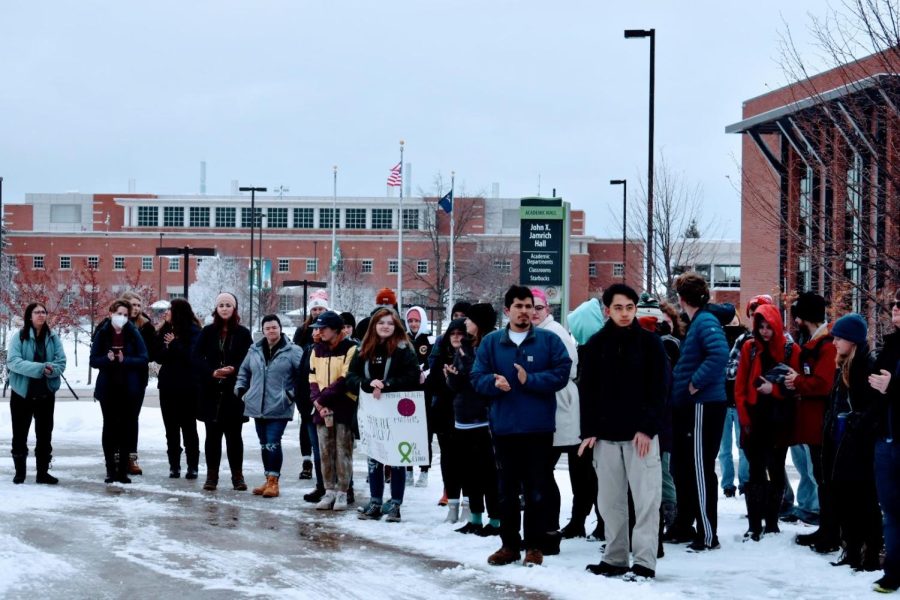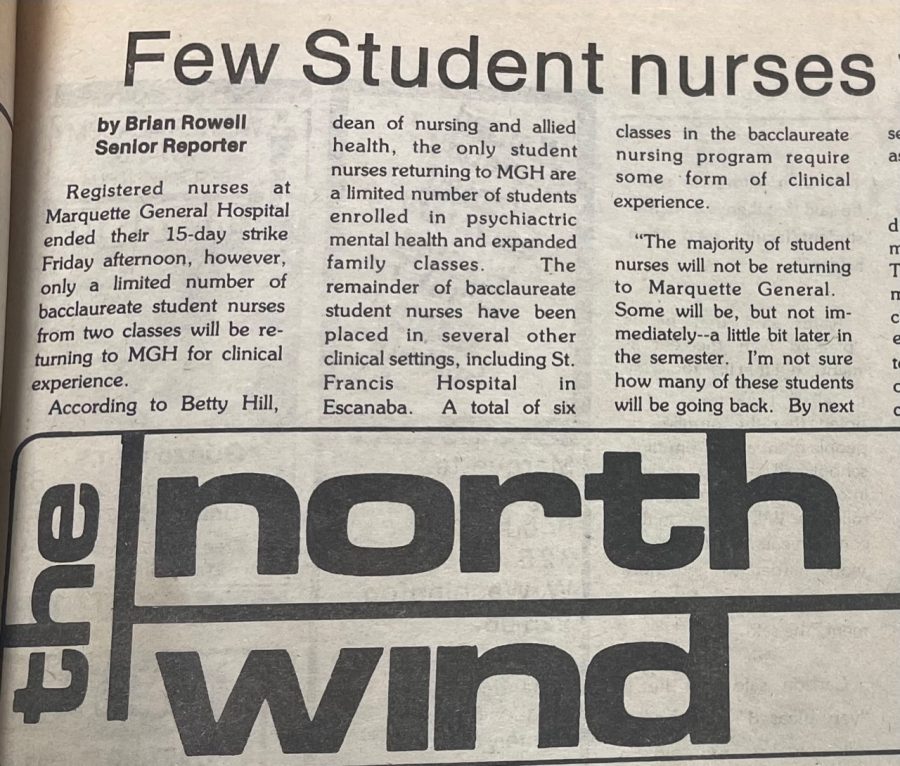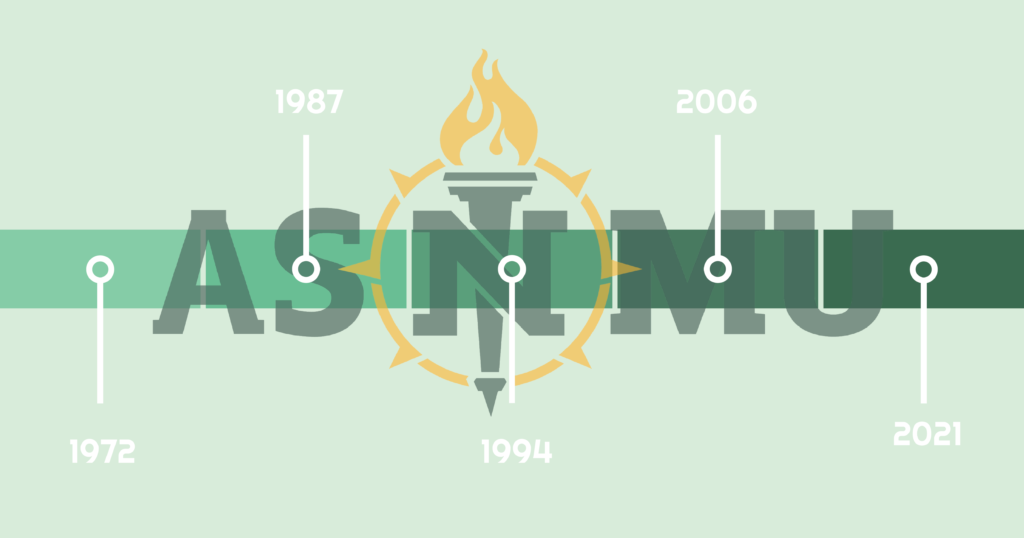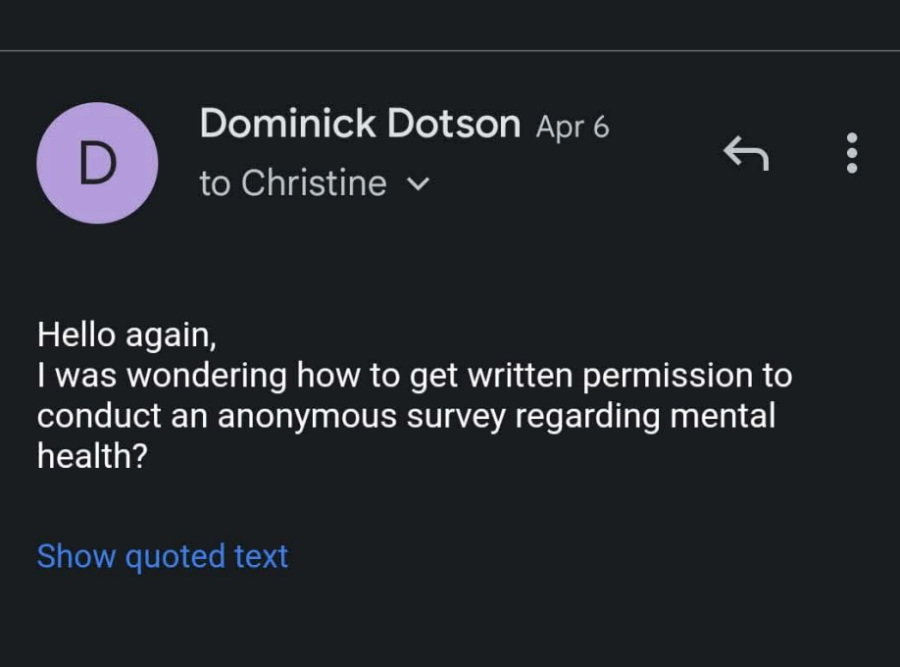This week NMU students had the opportunity to join the Be The Match national bone marrow campaign. The drive took place on Monday, Sept. 23 in the Payne/Halverson lobby and on Tuesday, Sept. 24 in the University Center. By filling out a simple registration form and completing a cheek swab, students who registered are entered into the national registry where they could potentially be matched with donors suffering with leukemia or other blood diseases such as sickle cell anemia.
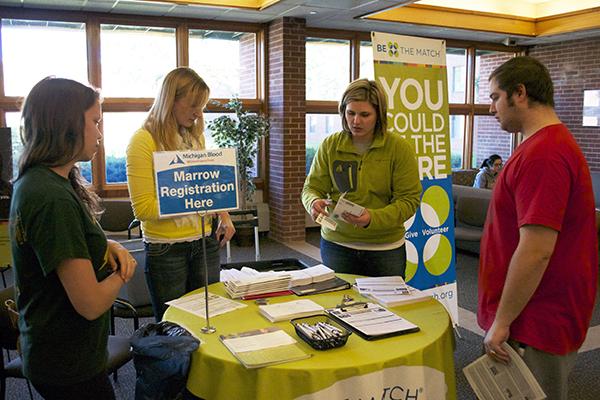
Michigan Blood Representative Kona Dominick said there are many misconceptions about the bone marrow donation process.
“You hear a lot of horror stories about people who donate bone marrow and they’re in agonizing pain for weeks, and that’s just not true,” Dominick said.
Dominick explained that only 30 percent of matches for patients are found within the family, with the other 70 percent being found outside the family using the national registry and that patients especially need registry members ages 18 to 44.
After being added to the registry, students will stay on the registry until they are 61 unless they choose to be removed.
There are two ways to donate bone marrow, explained Dominick. The first method is very similar to a blood or plasma donation, where white blood cells are removed from the blood.
Donors using this method may experience a slight head or muscle ache that will disappear very shortly after the donation. Patients are usually back to their normal routine within a day or two after donating.
The second method of bone marrow donation is a surgical method using anesthesia, taking the marrow from the back of the pelvis. Although this type of donation can be more painful than the other method, Dominick assures that the pain is not anywhere near as bad as many people have been told.
“It’s like a dull ache in your lower back, kind of like when you fall on ice and bruise your tailbone,” Dominick said. “They’re usually back on their feet in about 2 to 7 days.”
“There’s about a 1 in 500 chance of becoming a match once potential donors are registered,” Dominick said.
Senior clinical laboratory science major Brooke Dishaw was informed she was a potential candidate for donation after registering two years ago through the NMU Be The Match Drive.
“I signed up in 2011 and they called me the first week of classes this semester and told me I was a potential match,” said Dishaw. “Then they sent me a box with some testing supplies that I took to the health center, and they did the tests and shipped the box back.”
Dishaw said that a week later she was a confirmed match for a 68-year-old who was diagnosed with leukemia. Dishaw will undergo a physical on Monday Sept. 30 and she will then travel to Grand Rapids to complete the bone marrow donation on Monday, Oct. 28 and Monday, Oct. 29.
All travel, lodging and meal expenses are taken care of by the National Marrow Donor Program. Bone marrow donors will never have to pay for any expenses throughout the process, and donors are never paid for their bone marrow.
The bone marrow donors as well as the patients who receive the bone marrow transplant are initially not allowed to know any personal information about each other.
Other than the age and condition of the patient, Dishaw doesn’t know anything else about who she is donating for. One year after the donation is complete, the donor and patient have the option to receive each other’s contact information.
“I will definitely give my contact information,” Dishaw said. “I’m a little nervous, but I’m way more excited.”
Those who were unable to attend the drive can find more information about donating bone marrow at www.bethematch.org where anyone can order their free registration kit to add themselves to the donor registry.






















